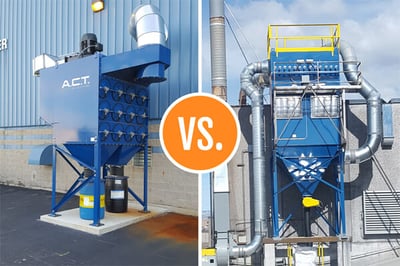
Choosing an industrial baghouse dust collector or a cartridge collector isn’t just about the sticker price. The wrong decision can hurt indoor air quality (IAQ), trigger OSHA or EPA violations, waste energy, and put employees in harm’s way. Because every plant, process, and dust stream is different, there’s no universal solution, but two technologies handle the vast majority of dry-dust applications in North America:
- Baghouse collectors are the rugged veterans built for heavy, abrasive dust and high temperatures.
- Cartridge collectors are the compact specialists designed for superior capture of fine particulate.
This guide breaks down how each system works, where each shines, and how to choose the best fit for your operation. As you read, feel free to explore our TLM baghouse models, ARB round baghouse dust collectors, cartridge collectors, or request a quote for a personalized recommendation.
What is a Baghouse Dust Collector?
A baghouse, sometimes called a baghouse filter, pulls dust‑laden air through rows of hanging fabric tubes.
Think of dozens of cloth socks inside a metal cabinet. Dust cakes on the outside of each bag, while clean air passes through the fabric and exits the collector. Automated pulse‑jet or reverse‑air blasts knock the dust loose so it drops into a hopper for easy disposal.
Baghouses have been the backbone of industrial air filtration for decades because they thrive on large particle loads, sticky or fibrous dust, and process temperatures up to about 500 °F (260 °C). Their sturdy design earns them a spot in wood mills, grain elevators, and foundries - places where lighter collectors would quickly clog or overheat.
Benefits of Baghouse Collectors
Handles heavy dust loading: Thick, felted bags resist abrasion and let you move tons of particulates without blinding the media.
Long filter life: With proper sizing and pulsing, bags often last one to three years (sometimes longer), reducing the frequency of filter changes, cutting labor costs, and sending less waste to landfill.
High‑temperature tolerance: Specialty fabrics shrug off hot airstreams that would melt pleated cartridges.
Versatile material handling: Wood chips, grain dust, fiberglass strands, sticky minerals, baghouses cope with them all.
Best Baghouse Dust Collector Applications
Baghouse dust collectors are the preferred choice for facilities and industries dealing with:
- Woodworking operations, from small cabinet shops to large sawmills processing various wood species
- Grain handling facilities, including flour mills, wheat processing, and silo filling operations
- Foundry applications dealing with sand, metallic dust, and other abrasive materials
- Fibrous dust collection in textile manufacturing and processing
- Fiberglass cutting operations that generate both fine and coarse particulate
- Mineral bulk loading where large volumes of particulate are generated
- Food processing facilities handling dry ingredients and processing byproducts
These applications share common characteristics: higher dust loading, larger particle sizes, and often elevated process temperatures that make baghouse collectors the most cost-effective and reliable solution. A.C.T. now offers both square and round baghouse designs - our ARB and TLM models - so facilities can choose the configuration that best matches their layout and airflow needs.
What is a Cartridge Dust Collector?
Cartridge collectors swap cloth bags for pleated filters - accordion‑style elements that pack enormous media areas into a small shell. Contaminated air flows through the pleats; a quick shot of compressed air dislodges dust so the cartridges keep breathing freely.
Modern cartridges capture particles as small as 0.3 micron at efficiencies above 99 percent. Their compact design often fits beneath a mezzanine or alongside a production line where space is tight.
Benefits of Cartridge Collectors
Compact efficiency: A cartridge unit delivering 6 000 CFM might stand just 12 feet tall, compared with 30‑plus feet for an equivalent baghouse.
Easy maintenance: Quick‑release action locks let one technician swap a 30‑lb cartridge in minutes - no confined‑space entry, no scaffolding.
Superior fine‑dust capture: Welding fume, pharmaceutical powders, and laser‑cutting smoke all fall well within the cartridge sweet spot of 0.3-5 microns.
Flexible installation: Many models mount indoors or outdoors and can recirculate conditioned air to slash HVAC costs.
Best Cartridge Applications
Cartridge dust collectors are the optimal choice for facilities and processes including:
- Welding operations generating fine metallic fumes
- Laser cutting applications producing ultra-fine particulate and smoke
- Plasma cutting processes with similar fine-particle generation
- Sandblasting and other abrasive finishing operations
- Pharmaceutical manufacturing dealing with precise powder handling
- Flame spraying and thermal spray coating operations
- General metalworking including grinding, polishing, and machining
- Powder coating applications requiring clean air for quality finishes
When selecting cartridge orientation, consider that horizontal cartridges offer advantages over vertical designs. Horizontal cartridges utilize a down-flow air pattern that works with gravity rather than against it, blowing particles directly down into collection bins. This design reduces maintenance complexity and improves cleaning efficiency compared to vertical cartridges that can be more difficult to access and maintain.
Cartridge or Baghouse - Key Differences at a Glance
|
Consideration |
Baghouse Collector |
Cartridge Collector |
|
Filter medium |
Felt or woven bags |
Pleated cartridges |
|
Particle sweet spot |
≥ 5 µm |
0.3–5 µm |
|
Dust loading |
Heavy, abrasive |
Light–moderate |
|
Heat tolerance |
Up to 500 °F |
Usually < 200 °F |
|
Unit footprint |
Large / outdoor |
Compact / indoor–outdoor |
|
Filter change |
1–3 yrs, more labor |
~1 yr, quick swap |
|
Typical industries |
Wood, grain, foundry |
Welding, lasers, pharma |
Each technology has earned its place: cartridges win where space is limited and dust is ultra‑fine, while a baghouse dust collector remains the champion for bulk loading, sticky material, or elevated temperatures.
Download our detailed guide to learn more about the difference between baghouse and cartridge dust collectors.
Maintenance & Lifecycle Costs
Cartridge filters need replacement roughly once a year. One person with basic PPE can usually complete the job in under an hour. The trade‑off is more frequent media purchases.
Baghouse filters last longer - often two or three years - but filter change‑outs involve a two‑person crew and lift equipment to access roof‑level doors. The longer life offsets the higher labor when the bags finally do need swapping.
Regardless of collector type, tracking pressure differential across the filters alerts you to rising resistance so you can clean or change media before airflow suffers.
Energy, Footprint & Compliance Considerations
Energy use: Cartridge collectors often recirculate cleaned air back into the plant, saving on heating and cooling. Baghouses usually exhaust outdoors, which may require makeup‑air systems in cold climates.
Floor space: If ceiling height is under 15 feet or the slab can’t handle a tall tower, a cartridge unit is the practical choice. Baghouses frequently sit on an outdoor pad with explosion‑relief vents.
Compliance: Both systems can meet OSHA PELs and NFPA 652 for combustible dust when properly sized and equipped with explosion isolation and venting.
Other Types of Dust Collectors (and Why They’re Less Common)
Cyclone pre‑cleaners knock out large chips but can’t hit regulatory emission limits alone. Wet scrubbers quench combustible dust but add wastewater handling. Electrostatic precipitators work well on smoke but cost more to maintain. For most dry‑particulate jobs, baghouse and cartridge systems strike the best balance of efficiency, footprint, and cost.
How to Choose the Right System for Your Facility
- Dust profile. Identify particle size, bulk density, and whether the dust is hygroscopic, sticky, or explosive.
- Airflow & duty cycle. Continuous 24/7 operations need bigger fans and tougher media than a batch process.
- Physical constraints. Measure ceiling height, roof load, and maintenance access points before selecting a collector.
- Regulatory thresholds. Confirm OSHA PELs, NFPA venting, and any EPA stack limits that apply to your site.
- Total cost of ownership. Balance media life, fan horsepower, energy recovery, and downtime costs.
Choosing the wrong system can inflate power bills and still leave fine dust circulating in your plant. Our engineers model airflow, test dust samples, and project life‑cycle costs so you get a collector sized exactly for your needs. Request a quote or schedule a free application review today.
Frequently Asked Questions
Q: What’s the difference between a baghouse and cartridge dust collector?
A baghouse relies on hanging fabric bags to capture heavier, hotter dust streams; a cartridge unit uses pleated filters to trap fine particulates in a smaller cabinet. Need help deciding? Request a quote and our team will size the right unit for you.
Q: Are baghouse filters better for woodworking?
Yes. Coarse, fibrous wood dust loads evenly on bags without clogging, and the large volumes typical of sawmills suit a baghouse’s heavy‑duty design.
Q: How often should I replace cartridge filters?
Inspect monthly and plan for replacement roughly once a year or sooner if pressure drop rises by 6 in. w.c. We stock ACT Nano‑Elite cartridges for same‑day shipment.
Q: Do baghouse filters last longer than cartridge filters?
Generally yes. Pulse‑jet bags often serve two or more years before replacement, though change‑outs take longer when that day arrives.
Why Partner with A.C.T. Dust Collectors?
Whether you call it a dust collector bag house or a dust collection bag house, we build maintenance‑friendly features into every model:
- Hinged access doors and tools‑free pulse tubes on baghouses - no heavy lids to wrestle.
- Quick‑release action locks and horizontal filters on cartridges - no knobs, no clogged pleats.
- Stocked parts and filters are ready to ship to you within a week of purchase.
Ready to improve your facility's air quality? Browse all industrial dust collectors, download our comparison guide, or request a quote today - cleaner air is just a click away.


























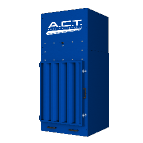
%20Collectors%20Image.png?width=143&height=143&name=ADC%20(Ambient)%20Collectors%20Image.png)
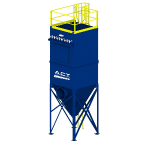

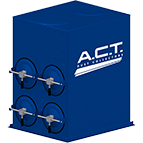
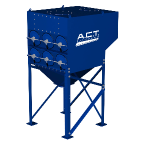
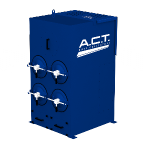


















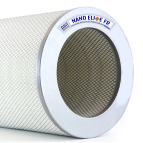


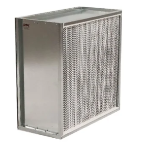

.png?width=240&height=91&name=ACT%20Dust%20Collectors%20Logo%20Solid%20White%202020%20(1).png)
.png?width=148&height=149&name=usa-manufactured-dust-collectors%20(1).png)